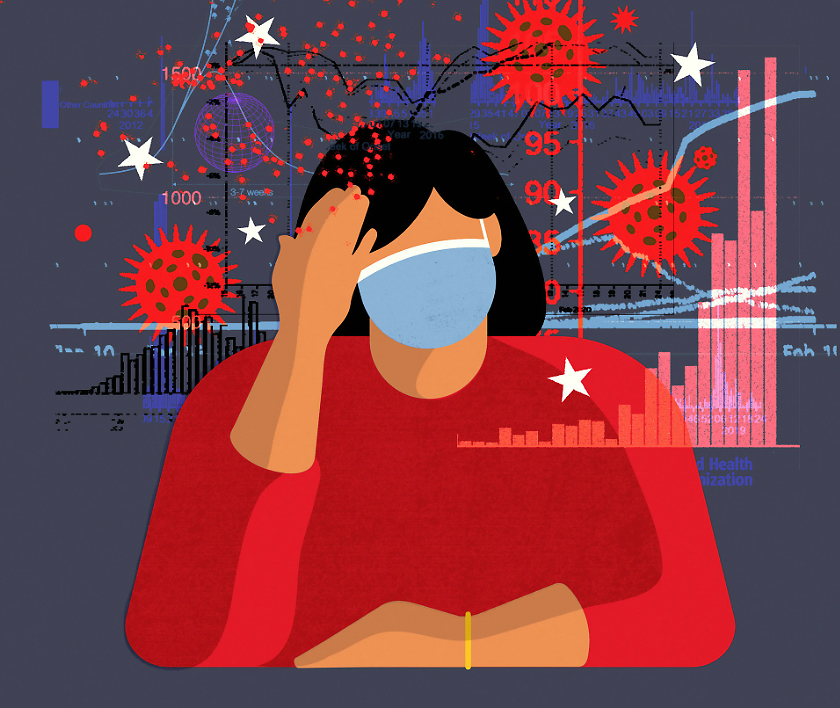COVID-19, What We Don’t Know
White House Reality Check
President Trump this week proposed guidelines for reopening the economy and suggested that a swath of the United States would soon resume something resembling normalcy.
For weeks now, the administration’s view of the crisis and our future has been rosier than that of its own medical advisers, and of scientists generally.
In truth, it is not clear to anyone where this crisis is leading us.
The scenario that Mr. Trump has been unrolling at his daily press briefings — that the lock-downs will end soon, that a protective pill is almost at hand, that football stadiums and restaurants will soon be full — is a fantasy, most experts agree.
What We Don’t Know Can Kill Us
More than 20 experts in public health, medicine, epidemiology and history shared their thoughts on the future during in-depth interviews.
When can we emerge from our homes?
How long, realistically, before we have a treatment or vaccine?
How will we keep the virus at bay?
The path forward depends on factors that are certainly difficult but doable, they said: a carefully staggered approach to reopening, widespread testing and surveillance, a treatment that works, adequate resources for health care providers — and eventually an effective vaccine.
Still, it was impossible to avoid gloomy forecasts for the state, the nation, and the world next year.
_______________________________________________________________________
Despite the relentless, heroic work of doctors and scientists around the world, there’s so much we don’t know about this pandemic…
- We don’t know how many people have been infected with Covid-19 (only reported cases).
- We don’t know the full range of symptoms.
- We don’t always know why some infections develop into severe disease.
- We don’t know the full range of risk factors.
- We don’t know exactly how deadly the disease is.
- We also don’t have answers to more detailed questions about how the virus spreads, including:
- “How many virus particles does it even take to launch an infection?
- How far does the virus travel in outdoor spaces, or in indoor settings?
- Have these airborne movements affected the course of the pandemic?”
- How far does the virus travel in outdoor spaces, or in indoor settings?
- “How many virus particles does it even take to launch an infection?
- We don’t know for sure how this COVID-19 virus first emerged.
- We don’t know how much China has concealed the extentof the coronavirus outbreak in that country.
- We don’t know what percentage of adults and what percentage of children are asymptomatic.
- We don’t know for certain if the virus will subside as the Northern Hemisphere enters the warmer months of spring and summer, as other viruses do. The director of the Centers for Disease Control and Prevention is bullish. Other experts, not so much.
- We don’t know the strength and duration of immunity. Though people who recover from Covid-19 likely have some degree of immunity for some period of time, the specifics are unknown.
- We don’t yet know why some who’ve been diagnosed as “fully recovered” from the virus have tested positive a second time after leaving quarantine.
- We don’t know why some recovered patients have low levels of antibodies.
- We don’t know the long-term health effects of a severe Covid-19 infection. What are the consequences to the lungs of those who survive intensive care?
- We don’t yet know if any treatments are truly effective. While there are many therapies in trials, there are no clinically proven therapies aside from supportive care.
- We don’t know if people will continue to adhere to social distancing guidelines once infections go down.
- We don’t know when states will be able to test everyone who has symptoms.
- We don’t know how many vaccines can be deployed and administered in the first months after a vaccine becomes available.
- We don’t know how a vaccine will be administered — who will get it first?
- We don’t know if a vaccine will be free or costly.
- We don’t know if a vaccine will need to be updated every year.
In absence of Federal leadership and national coordination of policy and resources, we don’t know if we can implement “test and trace” contact tracing at scale — an essential requirement to America (and Hawaii) back to work.
The worry among the medical community is that an unhappy population, trapped indoors for months, with the most vulnerable possibly quarantined for far longer will abandon restrictions despite the risks, is that the virus will be with us from now on, or that a vaccine will initially elude scientists, stretching out what feels for some like intolerable isolation from work and friends, and island life activities once taken for granted, like swimming, surfing and paddling at your favorite beach.
“My optimistic side says the virus will ease off in the summer and a vaccine will arrive like the cavalry,” said Dr. William Schaffner, a preventive medicine specialist at Vanderbilt University medical school. “But I’m learning to guard against my essentially optimistic nature.”
Reputable longer-term projections for how many Americans will die vary, but they are all grim. Various experts consulted by the Centers for Disease Control and Prevention in March predicted that the virus eventually could reach 48 percent to 65 percent of all Americans, with a fatality rate just under 1 percent, and would kill up to 1.7 million of them if nothing were done to stop the spread.
A model by researchers at Imperial College London cited by the president on March 30 predicted 2.2 million deaths in the United States by September under the same circumstances.
By comparison, about 420,000 Americans died in World War II.
Last, but not least, we do not know exactly how transmissible or lethal the virus is. But refrigerated trucks parked outside hospitals tell us all we need to know: It is far worse than a bad flu season, as COVID-19 was previously described by the president.
There may be good news buried in all this, the virus may also be mutating to cause fewer symptoms. In the movies, viruses become more deadly. In reality, they usually become less so, because asymptomatic strains reach more hosts. Even the 1918 Spanish flu virus eventually faded into the seasonal H1N1 flu.



Leave a Reply
Join the Community discussion now - your email address will not be published, remains secure and confidential. Mahalo.